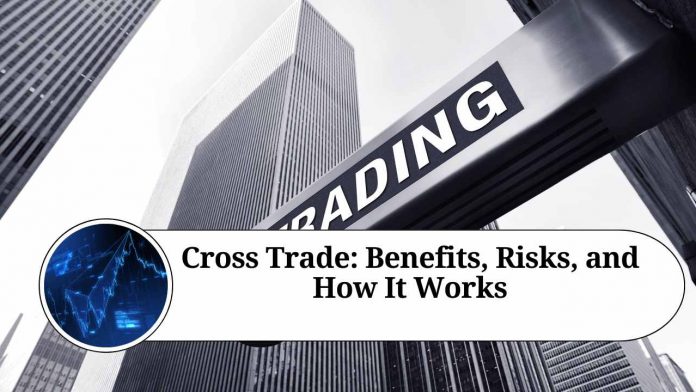INTRODUCTION
Cross-trade is a type of international trade where the seller and buyer of goods are located in different countries, but the goods themselves never enter the country of the seller. Instead, the goods are shipped directly from the country of origin to the country of the buyer. Cross-trade transactions involve three parties: the buyer, the seller, and the third-party logistics provider who facilitates the movement of the goods between the two countries.
Cross-trade has become increasingly popular in recent years due to the growth of global trade and the rise of e-commerce. For example, a company in the United States may need to purchase goods from a supplier in China, but rather than shipping the goods to the US and then re-exporting them to a third country, the goods are shipped directly from China to the third country.
There are many benefits to cross-trade transactions. First, they can be more cost-effective than traditional trade routes because the goods do not need to be transported to the country of the seller before being shipped to the buyer. This can save time and money on shipping costs, storage fees, and other expenses.
Second, cross-trade can be a more efficient way to manage the supply chain. By eliminating unnecessary steps in the shipping process, cross-trade can reduce lead times and improve delivery times. This can be especially important for companies that need to quickly respond to changing market conditions or customer demands.
However, there are also some challenges associated with cross-trade. One of the biggest challenges is ensuring that the logistics provider is trustworthy and can handle the complex process of shipping goods between two countries without any issues. Additionally, there may be legal and regulatory hurdles to overcome, such as customs regulations and trade agreements between the countries involved.
Overall, cross-trade can be a valuable tool for companies looking to expand their international trade operations. By working with a reputable logistics provider and carefully navigating the legal and regulatory requirements, companies can take advantage of the cost and efficiency benefits of cross-trade while minimizing the risks.
Cross-trade is also known as triangular trade, as it involves three different countries. It allows companies to access goods and suppliers from different parts of the world, which can improve their competitiveness and supply chain resilience.
Another benefit of cross-trade is that it can help companies to avoid trade barriers and tariffs. For example, if a company in Europe wants to import goods from China, it may have to pay tariffs on those goods when they arrive in Europe. However, if the goods are shipped directly from China to a third country, the company may be able to avoid those tariffs.
Cross-trade can also be useful for companies that operate in countries with limited trade agreements or political tensions. For example, a company in India may not be able to trade directly with a company in Pakistan due to political tensions between the two countries. However, by using a logistics provider to facilitate a cross-trade transaction, the Indian company can still access goods from Pakistan without having to deal with political barriers.
However, there are also some risks associated with cross-trade. For example, companies may have less control over the quality of the goods they receive, as they are not able to inspect the goods before they are shipped directly to the third country. Additionally, there may be increased risks of fraud and counterfeit goods.
To mitigate these risks, companies need to work with trusted logistics providers who have experience in cross-trade transactions. Companies should also carefully research and vet potential suppliers to ensure that they are reputable and can provide high-quality goods.
Overall, cross-trade can be a valuable tool for companies looking to expand their global trade operations. By carefully managing the risks and working with trusted logistics providers, companies can take advantage of the cost and efficiency benefits of cross-trade while accessing new suppliers and markets around the world.
Other Related Blogs: Section 144B Income Tax Act
Frequently Asked Questions
Q: What is cross-trade?
A: Cross trade, also known as triangular trade, is a type of international trade where the seller and buyer of goods are located in different countries, but the goods themselves never enter the country of the seller. Instead, the goods are shipped directly from the country of origin to the country of the buyer.
Q: What are the benefits of cross-trade?
A: Cross-trade can be more cost-effective and efficient than traditional trade routes, as it eliminates unnecessary steps in the shipping process. It can also help companies access new suppliers and markets around the world and avoid trade barriers and tariffs.
Q: What are the risks of cross-trade?
A: Cross-trade can pose risks such as less control over the quality of goods, increased risks of fraud and counterfeit goods, and legal and regulatory hurdles. Companies need to work with trusted logistics providers and carefully research and vet potential suppliers to mitigate these risks.
Q: How does cross-trade work?
A: Cross trade involves three parties: the buyer, the seller, and the third-party logistics provider who facilitates the movement of the goods between the two countries. The logistics provider arranges for the goods to be shipped directly from the country of origin to the country of the buyer, without passing through the country of the seller.
Q: When should a company consider using cross-trade?
A: Cross-trade can be a valuable tool for companies looking to expand their global trade operations, access new suppliers and markets, and improve their competitiveness and supply chain resilience. However, companies should carefully assess the risks and work with trusted logistics providers to ensure a successful transaction.




















